Antibiotic Liver Injury R-ratio Calculator
Calculate Your R-ratio
The R-ratio helps doctors determine the type of antibiotic-related liver injury. Enter your ALT and ALP levels to see if it's hepatocellular, cholestatic, or mixed injury.
Note: Normal upper limits are typically 40 U/L for ALT and 120 U/L for ALP. This calculator uses these standard values.
R-ratio Result
This determines the type of liver injury
Enter values above to see the R-ratio and injury type
Antibiotics save lives, but they can also quietly damage the liver. For every 100,000 prescriptions of amoxicillin-clavulanate, 15 to 20 people will develop noticeable liver injury. That’s not rare. It’s common enough that doctors need to watch for it - especially when patients are on antibiotics for more than a week. The liver doesn’t always scream when it’s hurt. Sometimes, it just whispers: a slight rise in ALT, a bump in ALP, no jaundice, no pain. But left unchecked, this can turn into full-blown hepatitis or cholestasis - two very different kinds of liver damage caused by the same class of drugs.
How Antibiotics Hurt the Liver
Antibiotics don’t just kill bacteria. They disrupt the balance inside your body - including the trillions of microbes in your gut. When antibiotics wipe out good bacteria, harmful ones can take over. This imbalance breaks down the gut lining, letting toxins leak into the bloodstream and reach the liver. The liver then has to process these toxins, and sometimes it can’t keep up.
At the cellular level, some antibiotics interfere with mitochondria - the energy factories inside liver cells. Without proper energy, liver cells start dying. Others create toxic byproducts during metabolism. These reactive chemicals bind to liver proteins, triggering inflammation and cell death. In some people, the immune system even mistakes liver cells for invaders and attacks them.
It’s not the same for every antibiotic. Amoxicillin-clavulanate (Augmentin) is the biggest culprit. About 70-80% of cases linked to it are cholestatic - meaning bile flow slows or stops. That leads to jaundice, itching, and dark urine. Fluoroquinolones like ciprofloxacin often cause mixed injury - both inflammation and bile buildup. Azithromycin? Usually mild, but it can still trigger liver enzymes to spike.
Hepatitis vs. Cholestasis: Two Faces of the Same Problem
Not all liver damage looks the same. Doctors use something called the R-ratio to tell them what kind they’re dealing with. It’s simple: divide the peak ALT level (a marker of liver cell damage) by the peak ALP level (a marker of bile duct trouble), then normalize both to their upper limits.
- R > 5 = Hepatocellular injury (hepatitis). ALT is way higher than ALP. Think of it like the liver cells themselves are burning up.
- R < 2 = Cholestatic injury. ALP is way higher than ALT. Bile is backed up, like a clogged drain.
- R between 2 and 5 = Mixed pattern. Both problems happening at once.
For example, if someone on amoxicillin-clavulanate has an ALT of 450 U/L and ALP of 220 U/L, their R-ratio is about 1.5 - clearly cholestatic. But if someone on linezolid has ALT at 700 and ALP at 180, R is 3.9 - mixed. The pattern tells you what’s going on inside, and it guides how you respond.
Who’s at Risk - And When Does It Happen?
It’s not just about the drug. The person matters too. People with sepsis are nearly twice as likely to develop antibiotic-related liver injury. Why? Their livers are already stressed. Their immune systems are in overdrive. Adding antibiotics pushes them over the edge.
Duration is huge. If you’re on an antibiotic for less than 7 days, your risk is low. But if you’re on it for a week or longer? Your risk jumps 3.2 times. That’s why ICU patients - often on broad-spectrum antibiotics for 10, 14, even 21 days - are the most vulnerable. One study found that 28.7% of patients on piperacillin-tazobactam for over a week developed liver injury. That’s almost one in three.
Gender plays a role too. Men are 2.4 times more likely than women to get liver injury from meropenem. Why? We’re still figuring that out. Genetics might be involved. So might hormones.
And then there’s the genetic wildcard. Some people carry specific HLA gene variants that make them extra sensitive. One small study found that people with HLA-B*57:01 were far more likely to have a severe reaction to flucloxacillin. That’s why some experts are pushing for genetic screening before prescribing certain antibiotics - especially in high-risk groups.
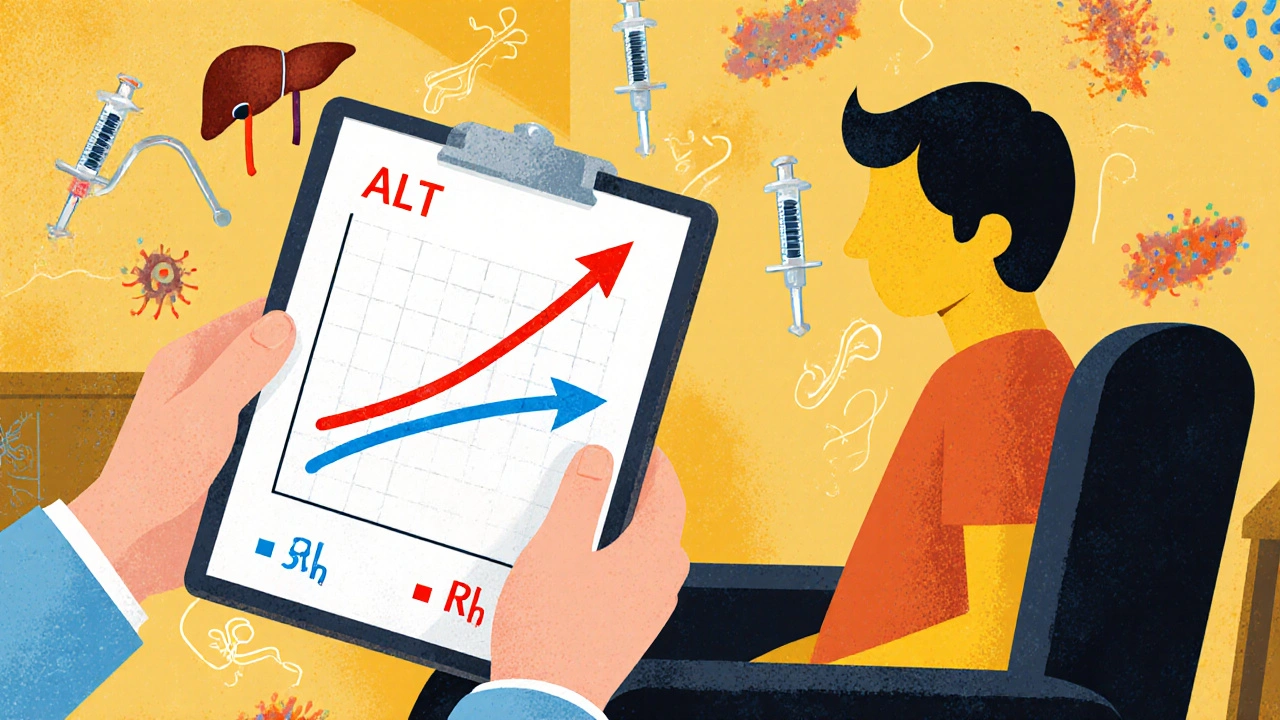
How Doctors Spot It - And When to Stop the Drug
The biggest challenge? Telling antibiotic-induced liver injury apart from everything else. In the ICU, patients have infections, low blood pressure, septic shock, heart failure - all of which can raise liver enzymes. It’s easy to blame the infection when the liver is acting up. But if you don’t look closer, you miss the real problem.
Here’s what doctors check:
- Baseline LFTs before starting antibiotics - especially for high-risk ones like amoxicillin-clavulanate or piperacillin-tazobactam.
- Repeat tests at 1-2 weeks, or weekly if the course is long.
- Pattern recognition - Is it hepatitis? Cholestasis? Mixed?
- Timing - Did the enzymes rise 1-6 weeks after starting? That’s classic for β-lactams.
- Exclusion - Ruling out viral hepatitis, alcohol, fatty liver, gallstones.
When to stop? The rule of 5 is widely used: stop if ALT is more than 5 times the upper limit of normal, or if ALP is more than 2 times normal and the patient has symptoms like jaundice, nausea, or fatigue. But it’s not absolute. If there’s no safe alternative - say, for a life-threatening infection - doctors may keep going, just with closer monitoring.
High-Risk Antibiotics and Their Patterns
Some antibiotics are notorious. Others are safer. Here’s a quick breakdown based on current data:
| Antibiotic | Typical Injury Pattern | Onset Time | Incidence per 100,000 Prescriptions |
|---|---|---|---|
| Amoxicillin-clavulanate | Cholestatic (R < 2) | 1-6 weeks | 15-20 |
| Piperacillin-tazobactam | Mixed (R 2-5) | 3-14 days | 10-15 |
| Ciprofloxacin | Mixed (R 2-5) | 1-2 weeks | 1-3 |
| Azithromycin | Mild hepatocellular | 1-3 weeks | <1 |
| Rifampin | Hepatocellular (dose-dependent) | 2-8 weeks | 2-5 |
| Nitrofurantoin | Cholestatic or mixed | 1-8 weeks | 2-4 |
Notice how amoxicillin-clavulanate stands out - not just in frequency, but in how it presents. It’s the most common cause of antibiotic-related liver injury in the U.S. That’s why many hospitals now flag it in electronic records and prompt clinicians to check LFTs after 10 days.
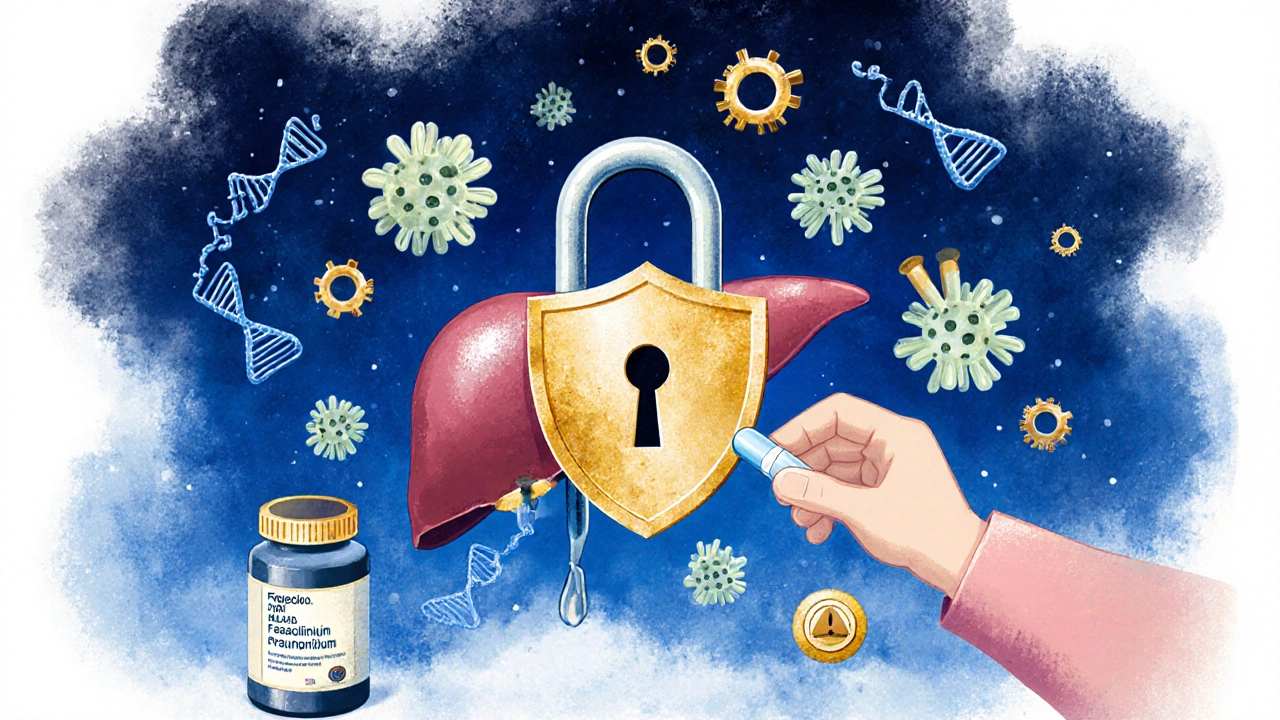
What Happens After Stopping?
Good news: most cases improve once the antibiotic is stopped. Liver enzymes usually start falling within days. Jaundice fades over weeks. Full recovery happens in 80-90% of cases within 3 months.
But not everyone recovers. A small percentage - maybe 5-10% - develop chronic liver injury. In rare cases, acute liver failure happens. That’s why it’s critical not to ignore rising enzymes. Even if the patient feels fine.
There’s no antidote. No magic pill to reverse the damage. The only proven treatment is stopping the drug and supporting the liver - hydration, nutrition, avoiding alcohol and other liver stressors. Steroids? Sometimes used in severe immune-mediated cases, but evidence is weak. N-acetylcysteine? Used in acetaminophen overdose, but not proven for antibiotics.
What’s Next? The Future of Prevention
Researchers are working on smarter ways to predict who’s at risk. One promising idea: test gut bacteria before starting antibiotics. People with low levels of Faecalibacterium prausnitzii - a beneficial gut bacterium - have nearly 4 times the risk of liver injury. A simple stool test could one day tell your doctor: “This patient is high risk. Choose a safer antibiotic.”
Clinical trials are testing probiotics to protect the gut during antibiotic treatment. Early results show promise. If they work, we might soon recommend a probiotic alongside every long-course antibiotic.
Long-term, pharmacogenomics could change everything. If we can screen for HLA variants linked to severe reactions, we could avoid high-risk antibiotics in susceptible people altogether. Imagine a future where your genetic profile tells your doctor which antibiotics are safe for you - and which could hurt your liver.
For now, the best defense is awareness. Know the risks. Monitor the numbers. Don’t assume liver enzyme changes are just “part of being sick.” And don’t ignore a rising ALT or ALP - even if the patient feels fine. The liver doesn’t complain until it’s too late.
Can antibiotics cause jaundice?
Yes. Jaundice - yellowing of the skin and eyes - is a common sign of cholestatic liver injury caused by antibiotics like amoxicillin-clavulanate or nitrofurantoin. It happens when bile flow is blocked, causing bilirubin to build up in the blood. Jaundice usually appears after other symptoms like dark urine, itching, or fatigue, and often signals that the liver injury is more advanced.
How long does it take for liver enzymes to return to normal after stopping antibiotics?
In most cases, liver enzymes start dropping within 1-2 weeks after stopping the antibiotic. Normal levels are usually reached within 4-12 weeks. Recovery can take longer if the injury was severe or if the patient had other liver conditions. Full recovery is expected in 80-90% of cases, but ongoing monitoring for 3-6 months is recommended.
Are over-the-counter antibiotics linked to liver injury?
No over-the-counter antibiotics exist in the U.S. All antibiotics require a prescription. However, some people misuse antibiotics obtained illegally or from overseas sources. These unregulated products may contain unknown doses or contaminants, increasing the risk of liver damage. Always use antibiotics prescribed by a licensed provider.
Can I take acetaminophen (Tylenol) if I have antibiotic-induced liver injury?
Avoid acetaminophen unless specifically approved by your doctor. Even at normal doses, acetaminophen can stress an already injured liver. In cases of drug-induced liver injury, any additional metabolic burden - including common pain relievers - can worsen damage. Use alternatives like physical therapy or non-liver-metabolized pain relief when possible.
Is antibiotic-related liver injury permanent?
Most cases are not permanent. The liver has a strong ability to regenerate. In over 80% of cases, full recovery occurs within 3 months after stopping the antibiotic. However, in rare cases (5-10%), the injury can become chronic or lead to long-term scarring (fibrosis). Very rarely, it can progress to acute liver failure requiring transplant. Early recognition and stopping the drug are key to preventing lasting damage.
Which antibiotics are safest for the liver?
Antibiotics with the lowest known risk for liver injury include penicillin G, cephalexin, and clindamycin (when used appropriately). Vancomycin and metronidazole also have relatively low hepatotoxicity rates. However, no antibiotic is completely risk-free - especially with prolonged use or in high-risk patients. Always weigh necessity against potential harm, and monitor liver enzymes if treatment lasts longer than 7 days.

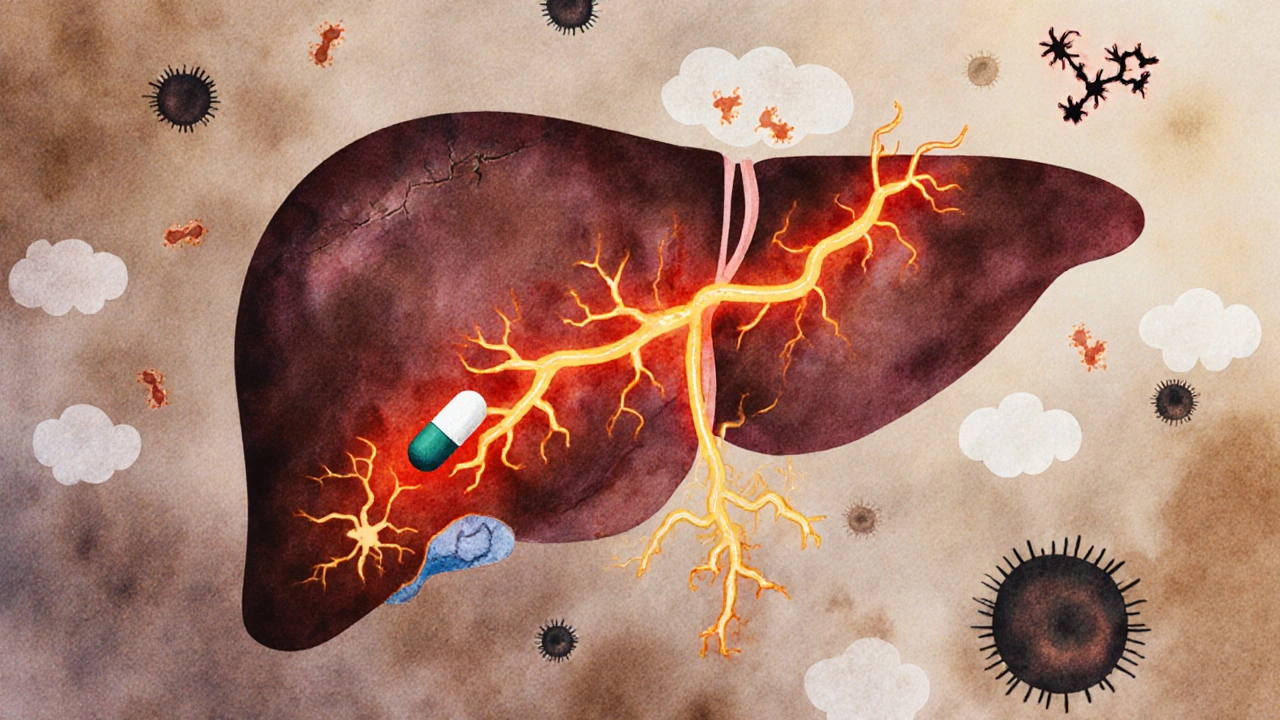
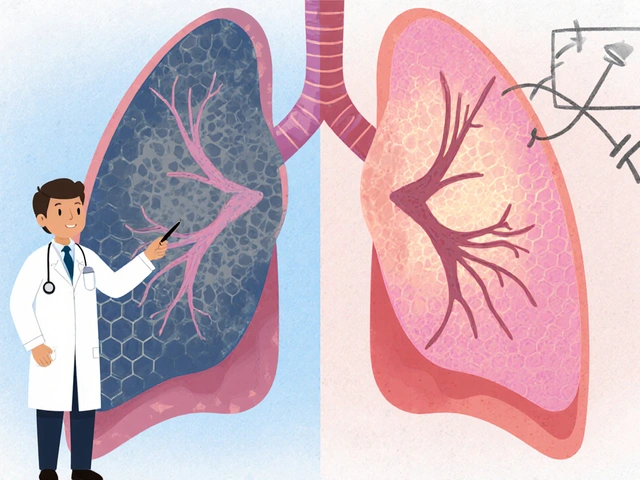

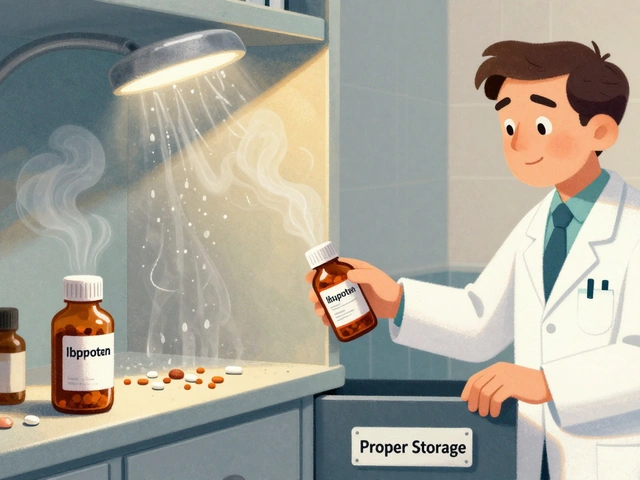



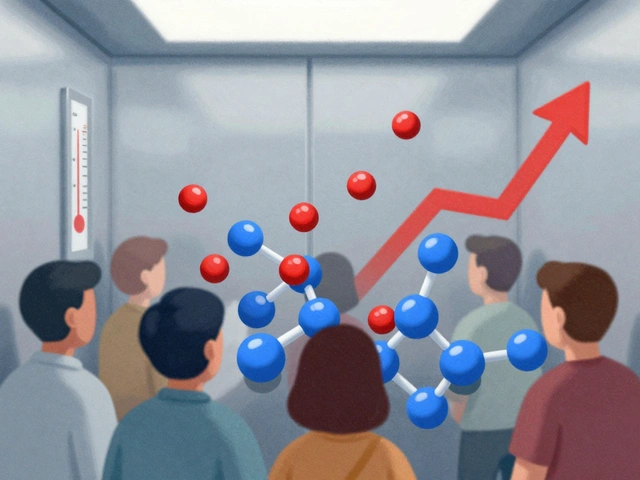
Katherine Reinarz
31 Oct 2025 at 15:46I got Augmentin for a sinus infection last year and woke up one morning looking like a banana 😅 turned out my liver enzymes were through the roof. Doctor was like 'oh lol that's a thing' and I was like 'wait you knew this could happen???'